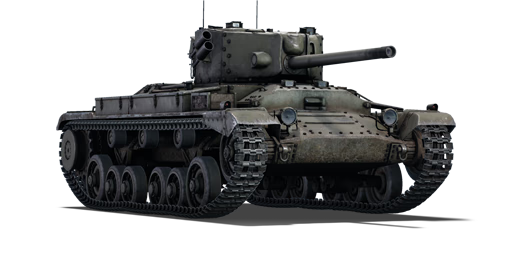

Ground Vehicles
▂МК-IX "Valentine"
II
Rank
AB
3.0
RB
3.0
SB
3.0
Battle rating
USSR
Research country
Medium tank
Main role

Premium vehicle
Status
General information
The MK-IX "Valentine" (USSR) is a premium gift Soviet medium tank. It was introduced during Update 1.95 "Northern Wind" as a special Valentine's Day vehicle. This is a Lend-Lease Valentine, shipped to the USSR by the British. The tank was made available to purchase in-game with Golden Eagles for specific mini-events like the 2020, 2021 2022, and 2023 Valentine's Day events.
Camouflages
Survivability and armour
Armour
front / side / back
Hull
60 / 43 / 60 mm
Turret
65 / 60 / 65 mm
Visibility
77 %
Crew
3 persons
Support systems
Mobility
Max speed
Forward
2427 km/h
Backward
3 km/h
Power-to-weight ratio
9.58.418.214.8 hp/t
Engine power
165146315256 hp
Weight
17.3 t
Optics
Gunner
Commander
Driver
Optics zoom
1.9x–3.5x
—
—
Armaments
57 mm 6pdr OQF Mk.III cannon
Ammunition
53 rounds
Reload
basic crew → aces
5.2 → 4 s
Vertical guidance
-8 / 17°
Turret Rotation Speed
basic crew → aces
Horizontal
11.29.521.115.2 → 1613.630.121.8 °/s
Vertical
2.82.29.86.3 → 43.2149 °/s
| Ammunition | Type | Armor penetration (mm) at a distance: | |||||
|---|---|---|---|---|---|---|---|
| 10 m | 100 m | 500 m | 1000 m | 1500 m | 2000 m | ||
| AP | 101 | 97 | 82 | 66 | 53 | 43 | |
| HE | 9 | 9 | 9 | 9 | 9 | 9 | |
| AP | 108 | 104 | 87 | 70 | 57 | 46 | |
| APC | 110 | 106 | 89 | 72 | 59 | 48 | |
| APCBC | 122 | 118 | 101 | 84 | 70 | 58 | |
Economy
Repair cost
AB
745 

RB
552 

SB
2,181 

Crew training
4,800 

Experts
32,000 

Aces
210 

Research Aces
440,000 

Reward multiplier
AB / RB / SB
 2 x (50 / 65 / 110) %
2 x (50 / 65 / 110) % 
 2 x 124 %
2 x 124 % 

Premium vehicle
All modifications are unlocked
Mobility | |
|---|---|
Protection |
|---|
Firepower | ||
|---|---|---|
Rating by players
You must play more than 3 battles for the last week and more than 10 battles in a vehicle to rate it.
Like:
13
Armor protection:
Not enough ratings
Survivability:
Not enough ratings
Mobility:
Not enough ratings
Armament:
Not enough ratings
Balance:
Not enough ratings
Tips & Tricks
This space is currently empty
Do you know any interesting vehicle features?
Loading...
No articles about this vehicle yet
Become the first author and get rewards!
Write a guide, tell about interesting historical facts, make a tutorial or simply an interesting post.
No more content